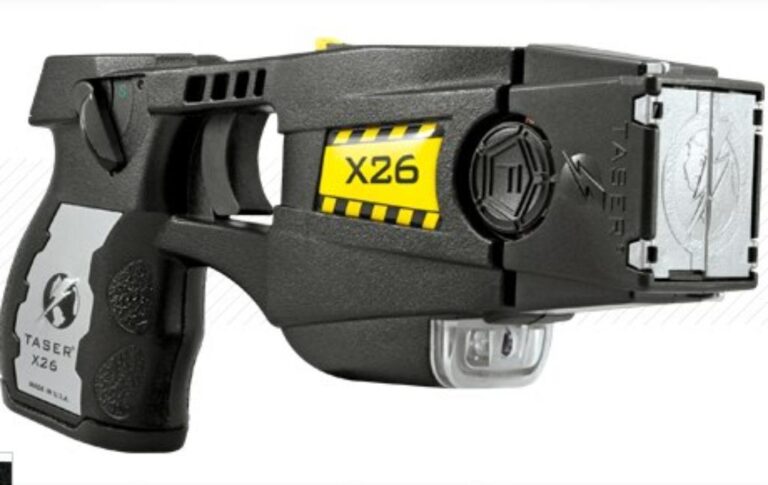Table of Contents
- Hawaii Legalizes Stun Guns Expanding Self-Defense Options for Residents
- Understanding the New Stun Gun Regulations and Legal Requirements in Hawaii
- Potential Impact on Public Safety and Crime Rates Following Legalization
- Expert Recommendations for Responsible Use and Training of Stun Guns
- Future Outlook
Hawaii Legalizes Stun Guns Expanding Self-Defense Options for Residents
In a significant shift in Hawaii’s self-defense laws, residents can now legally own and carry stun guns, providing a non-lethal option for personal protection. This legislative change, enacted in 2022, removes previous restrictions that had long prohibited the possession of these devices. Lawmakers emphasized that allowing stun guns offers individuals a means to defend themselves while minimizing the risk of fatal encounters, aligning the state more closely with self-defense regulations found in other parts of the country.
The new legal framework includes clear guidelines for stun gun ownership and usage, ensuring responsible carry without compromising public safety. Key provisions include:
- Age restrictions: Individuals must be at least 18 years old to legally possess stun guns.
- Usage limitations: Devices are intended strictly for self-defense purposes and not for offensive use.
- Prohibited locations: Carrying stun guns is banned in certain sensitive areas such as government buildings and schools.
Understanding the New Stun Gun Regulations and Legal Requirements in Hawaii
In a significant legislative development, Hawaii has officially legalized the possession and use of stun guns as of 2022. This change marks a notable shift in the state’s approach to self-defense, providing residents with an alternative non-lethal option to enhance personal safety. Previously, stun guns were prohibited under Hawaii law, classifying them alongside prohibited weapons. The new regulations remove this blanket restriction, permitting responsible citizens to carry and utilize stun guns within clearly defined legal boundaries.
However, the law imposes specific legal requirements designed to ensure safety and compliance. These include:
- Restriction of sales to individuals aged 18 and older
- Prohibition of carrying stun guns on school property and in government buildings
- Mandatory adherence to local firearm and weapon possession laws
- Clear prohibition on the use of stun guns for criminal activity or harassment
Potential Impact on Public Safety and Crime Rates Following Legalization
With the recent legalization of stun guns in Hawaii, experts and community members alike are closely monitoring potential shifts in the landscape of public safety and crime. Early indicators suggest that the availability of non-lethal self-defense tools may act as a deterrent against certain types of violent offenses, particularly assaults and robberies. Law enforcement officials emphasize that stun guns provide residents an alternative to firearms, promoting a lower risk of fatal encounters. However, some caution remains regarding the possibility of increased misuse or accidental injuries if proper education and regulation are not enforced.
Key factors influencing public safety include:
- Enhanced empowerment of law-abiding citizens to protect themselves effectively.
- Potential reduction in violent crime rates due to the perceived higher risk for offenders.
- Challenges in ensuring responsible ownership, including age restrictions and training requirements.
- The necessity for continuous data collection to evaluate long-term societal impacts accurately.
As the state adapts to this policy change, collaboration between community groups, legal authorities, and public health officials will be crucial to maximizing benefits while minimizing risks associated with stun gun usage.
Expert Recommendations for Responsible Use and Training of Stun Guns
With the legalization of stun guns in Hawaii, experts emphasize the importance of responsible ownership and thorough training to ensure these devices are used safely and effectively. Prospective users should invest time in understanding the mechanics and operational nuances of stun guns before carrying one. Proper training not only includes learning how to handle and activate the device but also comprehensive knowledge of local laws and self-defense protocols to avoid unintended legal consequences.
Specialists recommend the following best practices for new stun gun owners:
- Participate in certified self-defense courses that include stun gun training.
- Practice regularly in a safe environment to build confidence and reaction speed.
- Store the device securely, out of reach of children or unauthorized users.
- Stay updated on any changes in legal restrictions across different jurisdictions within Hawaii.
Future Outlook
As Hawaii moves forward with the legalization of stun guns, residents gain expanded options for personal protection amid evolving safety concerns. This legislative change reflects a broader national trend toward diversifying self-defense tools while maintaining regulatory oversight. Observers and authorities will continue to monitor the impact of this law on public safety and community well-being in the years ahead.Check Our Other Blogs
- StunGun – Your Trusted Source for Stun Guns, Laws, and Self-Defense Tips
- PepperSprayLaws – Your Trusted Resource for Pepper Spray Information
- StunGunLaws – Your Trusted Guide to Stun Gun Legality and Safety





